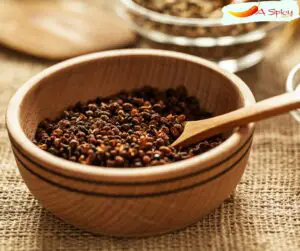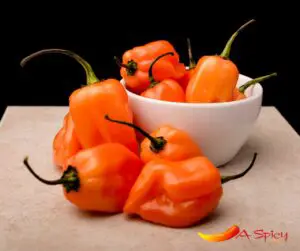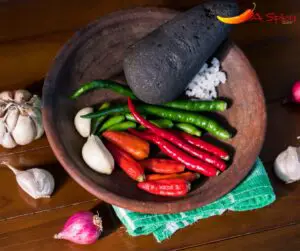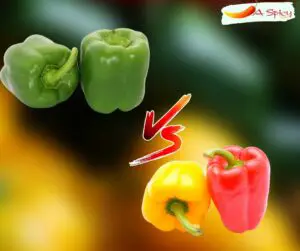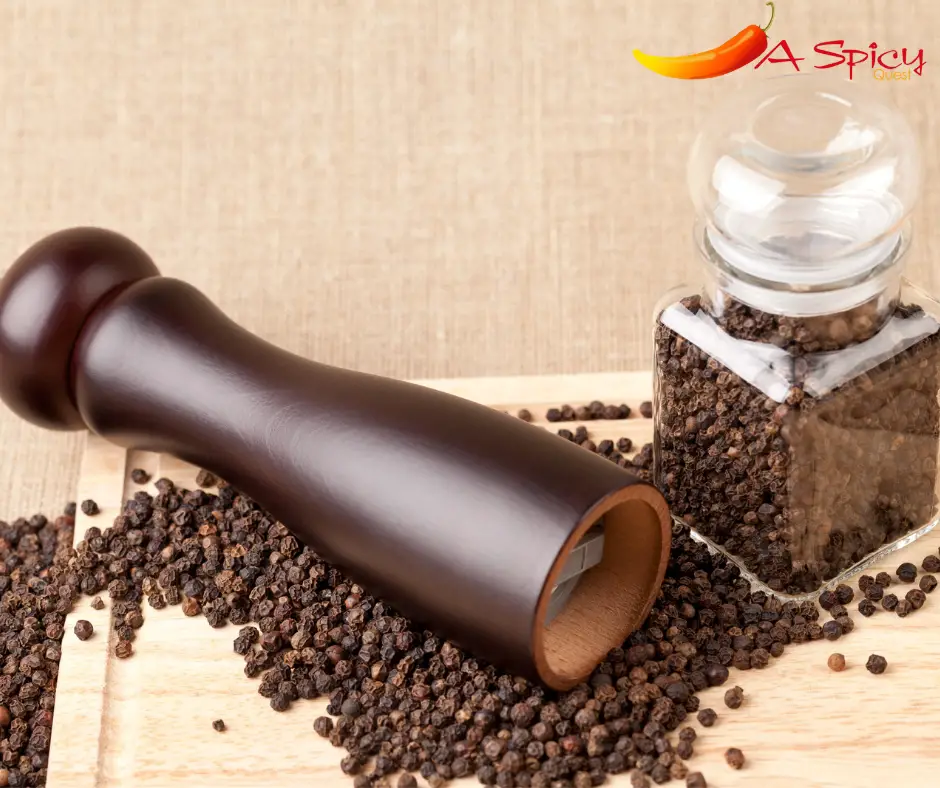
Black pepper has approximately 10,000 to 30,000 units on the Scoville Scale. This makes black pepper one of the mildest peppers you can find. In comparison, the Scotch Bonnet is 350,000 Scoville Heat Units (SHU). Black pepper is not on the top 10 list of the hottest peppers. Black pepper is fairly common, however. Many use it all over the world for cooking and garnishing.
Jalapenos are common too, and they are hot too but less so. Black Pepper is 4 to 12 times hotter than jalapenos.
What Makes Black Pepper Hot?
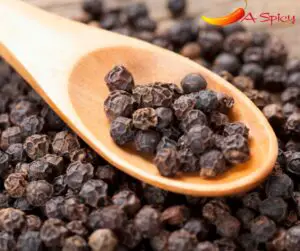
Black pepper is actually considered the most important pepper in the world. It is also the most used. Every culture and nation uses black pepper in one or another. It was first grown in India and only found its way into the west and the rest of the world following conquests by people like Alexander the Great and the Romans.
It is black in appearance when dried. It is hot because it contains piperine. It is this substance, an alkaloid, that’s responsible for the pungency you perceive when you smell the pepper. It is why black pepper leaves a burning sensation when you eat it. When measuring the Scoville unit of black pepper, it is this hotness that is considered.
What Is The Scoville Heat Unit?
An American pharmacist, Wilbur Scoville developed the Scoville test in 1912.
This is the measurement of the number of times sugar water dilutes capsaicin, a compound in chili pepper, in order for tasters to be able to have a taste without feeling the hotness on their tongue. This number, or Scoville unit, or SHU, tells you how much capsaicin is present in the pepper. A very high rating means a very hot pepper.
Experts who conduct these tests take an extract of capsaicin oil out of dried pepper and mix it with a solution of sugar and water. They have human testers go at the solution.
These folks test it until they’re unable to detect the hotness that you feel when you eat pepper.
Consequently, the pepper gets a rating that shows how much the pepper had to be diluted to remove the heat or burning sensation.
In the case of black pepper, what this means is: the capsaicin oil was diluted 10,000 to 30,000 times to get the burn it heats out of the taste.
The question now is, can we rely on these tests? Are they accurate?
Is Scoville Scale Accurate?
It is important to know if you can trust the effectiveness of this test. This allows you to have some confidence in the black pepper’s ability to serve the purpose for which you purchased it.
The truth of the matter is, the scoville measurement is subjective. One major reason is, human taste buds are involved in the test.
It complicates things when you realize that our taste palates don’t all work the same way. Some people’s taste buds are already used to the taste of chili pepper. Others aren’t. The results from two people with varying tasting capacities will differ.
Furthermore, black pepper from Africa isn’t exactly the same as black pepper from India because of the difference in soil composition, weather conditions, the maturity of the pepper and even the origin of the pepper seed.
So answering the question in one word, I’ll say the Scoville unit is relatively accurate.
Can You Have Your Pepper Tested?
It would surprise you to know you can actually have your pepper tested to know the Scoville rating. There are different types of peppers all over the world, and the same type of pepper can have different Scoville units as has been established above.
For this reason, you may be interested in having the black pepper from your region tested to compare it with other peppers from different places.
Unfortunately, the labs that do these tests are not all over the place. You can check with your local laboratories for information on getting these tests done.
Some universities would also likely have testing equipment in their labs.
The test can usually take a few days, a week, or two weeks. You can either appear at the labs with your pepper or you can mail it in a box. You can send fresh pepper or have it dried and ground before sending it.
To dry your pepper, you have to cut them into nits that you then put in a dehydrator. Keep the temperature at 125 degrees for six to seven hours. A higher amount of heat may ruin the pepper entirely. Your aim is to make the pepper become brittle enough to be able to ground it.
Thereafter, use a coffee grounder to ground it into fine powder.
Testing costs a little over $50 or more in some labs. The amount you pay, plus shipping if necessary, shouldn’t be more than $100.
Is The Scoville Unit The Only Test For Black Pepper?
No. An assembly of tasters for a Scoville test is subjective which makes the results of these tests conflicting sometimes.
For example, some say the Scoville score of black pepper is 10,000 to 30,000 others say it is 15,000 to 30,000. And it is impossible to say both test results are wrong on account of the factors already mentioned.
For this reason, High-Performance Liquid Chromatography (HPLC) was developed. This is a better way to measure the hotness of black pepper. This method measures the capsaicin in black pepper more scientifically and accurately.
The American Spice Trade Association (ASTA) uses this method to measure the heat in food that has capsaicin in them and gives each one its own ASTA Pungency units. For perspective, 1 ASTA equals approximately 15 SHUs.
Conclusion
Whether you should stick to the Scoville unit to measure your black pepper or adopt the more scientific method of ASTA depends on what’s available to you. Also, some have found that the results from ASTA are usually lower than what comes off Scoville Heat Units.

![Chilies In The Wild [History, Origin & Distribution]](https://spicyquest.com/wp-content/uploads/2022/11/20221116_050551_0009-300x251.jpg)
